An important element to the success of We English is an active engagement with you, the English public. I’m therefore encouraging visitors to this website to post YOUR IDEAS regarding events happening in your locale or hobbies and pastimes that you take part in, and that you’re happy for me to attend and photograph. I believe this collaboration will enable me to get a broader spectrum of coverage across themes and geographical locations, while also helping to find subject matter that is not part of the mainstream.
I’m interested in any ideas, the only proviso is that they take place outdoors, during daylight hours and are held in 2008.
The first 150 people to submit an appropriate idea will receive a limited edition, signed print from We English (see below), provided a valid postal address is given.
Ideas could include: beach combing, bikers, bowling, car boot sales, carninvals, church fetes, classic car rally, climbing, coursing, Cumberland wrestling, family rituals, farmers markets, fell running, gardening, greyhound racing, hound trailing, hunting, nudists, pagan events, paintballing, photography conventions, picnics, plane spotting, polo, raves, religious festivals, roller discos, spectator sports, stock-car racing, talent contests and twitching.
Events and pastimes I’ve already covered include (in no particular order): Laughton Country Show, Shoreham Airshow, banger racing at Arlington Stadium and Wimbledon Raceway, para-gliders on Devil’s Dyke, ramblers walking the Seven Sisters near Beachy Head, Christmas market in Salisbury, Pooh Sticks Bridge in Ashdown Forest, Middle Farm Apple Festival in Firle, Arundel Park, Lewes Bonfire Night, skate-park in Chatham, Stanmere Park in Brighton, pheasant shooting in Bramley and Finchdean, painters in Chichester’s Priory Park, Limpsfield Golf Course, runners in Knole Park Sevenoaks, swimmers in the Serpentine on Christmas Day, shoppers heading to the Boxing Day sale at Bluewater, fox hunting in Berkshire, the Haxey Hood, the Maldon Mud Race, Sunday league football at Hackney Marshes, allotments in Worthing, surfers in Goring-by-Sea and Bournemouth, London Harness Horse Parage at South of England Showground in Ardingley, jogging along River Cam in Grantchester, dry skiing in Welwyn Garden City, day-trippers to Flatford Mill, sea fishing by Sizewell Power Station, bird watchers in Titchwell, half term holidaymakers on Holkham Beach, blue bell walk in Walsingham, visitors to Great Yarmouth, Richmond Park, Midhurst rugby club, pigeon lofts in Hillsborough district of Sheffield, Easter egg trail around Priory Farm in Nutfield, British Marbles Championships in Tinsley Green, Easter Sunday in Chartwell, the Oxford and Cambridge Boat Race, Ladies Day at Aintree and sledging on Tandridge Golf Course in the April snow.
“Henry playing, Oxted, 2007”
Signed 6×4″ C-Type print from a limited edition of 150
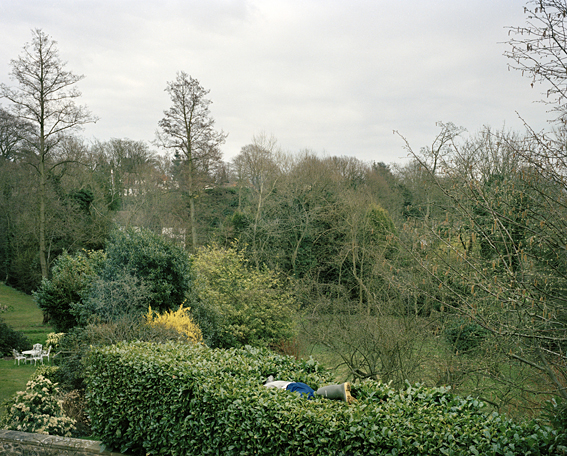
Â
Â
Posted in RESEARCH | 1 Comment »
“…the surprising thing about Ray-Jones was that he had a different idea of what subject matter was possible for serious photography. It did not have to be heroic or poetic in any overt sense: it could be on the surface as tedious or as bland as our real tedious and bland lives usually are, and the photographs might still be compelling.”Â
John Szarkowski, Director of Museum of Modern Art, New York (1962-1991)
Â
“His work spanned just a decade – he died aged 30 – but with his striking 1960s images of Britons at play, Tony Ray-Jones helped change the face of British photography for ever.”
Â
Liz Jobey, The Guardian, 2004
Â
Books of Tony Ray-Jones’ work-
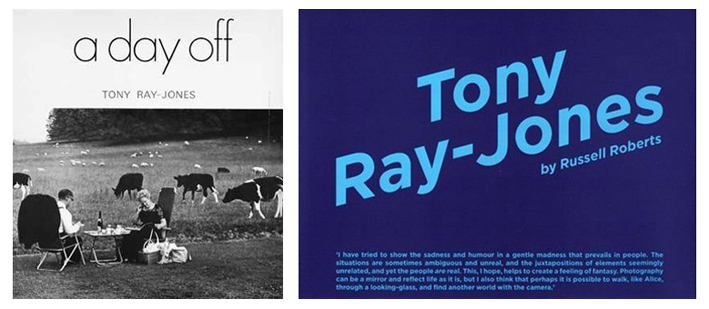
As part of my research for this project, last summer I paid a visit to the National Media Museum Photography Collection in Bradford whose extensive collection encompasses not only that of The Royal Photographic Society Collection, the Kodak Museum and the Daily Herald Archive, but also the Tony Ray-Jones archive. Many of the original photographs from Ray-Jones’ classic book on England ‘A Day Off; an English journal’ (Thames & Hudson) are held in the Collection alongside his diaries and notes from the project.
Given the huge significance of Ray-Jones’ landmark book ‘A Day Off’ (which was published in 1974 after his death) and its legacy as a document about England and Englishness, I was keen to see his original prints and read extracts from his diary in person.  On a personal note, Ray-Jones’ work had also been an important influence in my early development as a photographer and given I’m now about to depart on my own photographic journey around England,  I wanted to explore a bit deeper the work of this visionary artist.
Of his work in England, Ray-Jones wrote in Creative Camera (1968): “My aim is to communicate something of the spirit and the mentality of the English, their habits and their way of life, the ironies that exist in the way they do things, partly through tradition and partly through the nature of their environment…For me there is something very special and rather humorous about the ‘English way of life’ and I wish to record it from my particular point of view before it comes Americanised. We are at an important stage in our history, having in a sense just been reduced to an island or defrocked and, as De Gaulle remarked, left naked.â€
In the introduction to his book ‘Tony Ray-Jones’ (Chris Boot Ltd, 2004) Russell Roberts writes “A Day Off…..contrasted the veneer of modern leisure with a perception of the deeper significance of tradition and custom. It is an image of England from the perspective of both insider and outsider, employing a mix of empathy and ironic detachment, and laced with sardonic wit and pathos.â€
and
“Looking at A Day Off we do not see a stoic, entrenched nationalism in the face of imported values, but an account of Englishness that constitutes a more playful commentary about identity. His point about an England becoming increasingly Americanised invites us to find in these photographs traces of US influence and possible sites of English resistance. The celebration of ‘local culture’ heightens the differences in Englishness, and he presents a range of images that both reflect and undermine stereotypes.â€
It was fascinating (and humbling) to read Ray-Jones’ notebooks, which were full of lists, plans and ideas for possible pictures for his England work and revealed an extremely methodical approach to his organizing of the project. As seen here where he outlines possible ideas by location and places alphabetically –
Â
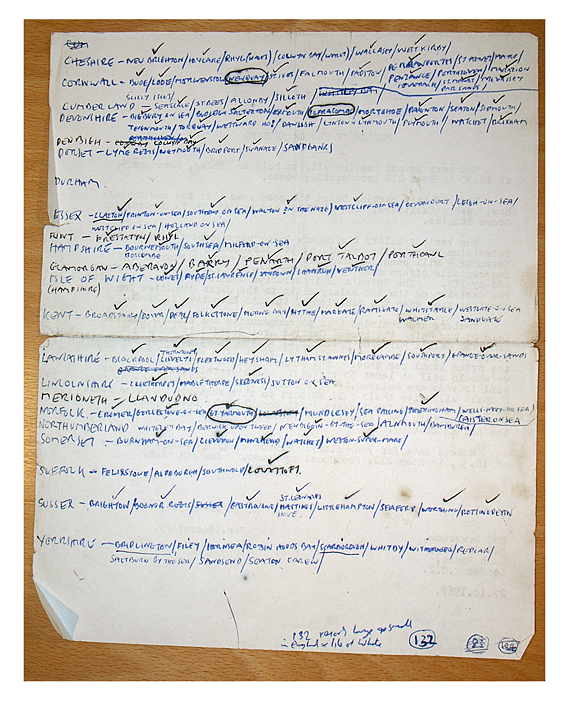
© Tony Ray-Jones/National Media Museum
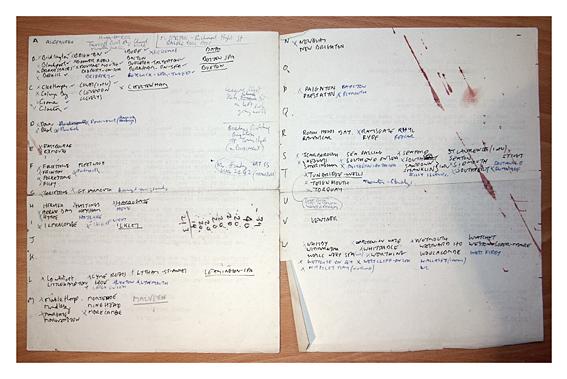
© Tony Ray-Jones/National Media Museum
Â
Extracts from his diaries highlight some of the struggles he encountered balancing editorial assignments and producing his own work, as well as funding the project. There was also a fascinating list, headed ‘APPROACH’:
Â

© Tony Ray-Jones/National Media Museum
Â
which I’ve reproduced here-
·      BE MORE AGGRESSIVE
·      GET MORE INVOLVED (TALK TO PEOPLE)
·      STAY WITH THE SUBJECT MATTER (BE PATIENT)
·      TAKE SIMPLER PICTURES
·      SEE IF EVERYTHING IN BACKGROUND RELATES TO SUBJECT MATTER
·      VARY COMPOSITIONS AND ANGLES MORE
·      BE MORE AWARE OF COMPOSITION
·      DON’T TAKE BORING PICTURES
·      GET IN CLOSER (USE 50mm LESS)
·      WATCH CAMERA SHAKE (shoot 250sec or above)
·      DON’T SHOOT TOO MUCH
·      NOT ALL AT EYE LEVEL
·      NO MIDDLE DISTANCE
Â
Finally, a letter on headed note paper dated May 25 1965, highlight Ray-Jones’ social concerns as a visual artist –
Â

© Tony Ray-Jones/National Media Museum
Â
Posted in INSPIRATION | 9 Comments »
As I’ve mentioned previously, We English aims to extend, and reflect upon, a rich history of documentary photographic projects by British photographers that have aspired to capture the lives of diverse communities across the country and explore issues surrounding national identity. Some of which could be seen in the recent exhibition at Tate Britain ‘How We Are – Photographing Britain’ (2007).
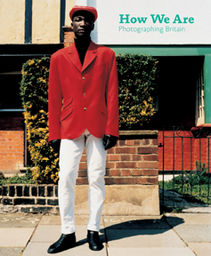
Â
I’ve compiled a timeline of major photographic projects that have been concerned with documenting the social, political or cultural landscape of England/Britain. Not all these bodies of work were published as books (for instance Another Country by Chris Killip & Graham Smith was an exhibition at the Serpentine), while some have been published much later after the photographs were produced (such as James Ravilious’ An English Eye). You can find links to many of the works under the ‘Photography’ section on the side panel.
This is not an exhaustive list, rather work I have come across over the years and which has proved inspirational in my research for We English. Please free free to add your suggestions of important work that I may have missed.
Timeline-
Benjamin Stone, A Record of England (1897-1910. Published 2006)
Bill Brandt, The English at Home (1936)
Humphrey Spender, Worktown, (1938)
The ‘Young Meteors’ – a generation of British photographers including Phillip Jones Griffiths, Don McCullin, Roger Mayne, Nigel Henderson, John Bulmer, Terence Donovan and David Hurn (1960s. Published 1999)
Jane Bown, The Unknown Bown (1947-67. Published 2007)
The John Hinde Butlins Photographs (1960-70s)
Tony Ray-Jones, A Day Off (1974)
Patrick Ward, Wish You Were Here – The English at Play (1976)
Homer Sykes, Once a Year- Traditional British Customs (1977)
Ian Berry, The English (1978)
Paul Graham, A1 – The Great North Road (1983)
Chris Killip & Graham Smith, Another Country (1985)
Raghubir Singh, Bradford Fellowship- National Media Museum (1985-86)
Martin Parr, The Last Resort (1986)
Peter Marlow, The Liverpool Project (1987)
Ingrid Pollard, Pastoral Interludes (1988)
Chris Killip, In Flagrante (1988)
Anna Fox, Workstations (1988)
Martin Parr, The Cost of Living (1989)
Chris Steele-Perkins, The Pleasure Principal (1989)
Paul Reas, Flogging a Dead Horse (1993)
John Kippin, Nostalgia for the Future (1995)
Mark Power, The Shipping Forecast (1999)
Martin Parr, Think of England (2000)
Richard Billingham, Ray’s A Laugh (2000)
Nick Danziger, The British (2001)
Jem Southam, Landscape Stories (2005)
Jan Williams & Chris Teasdale, Welcome to Britain (2005)
John Davies, The British Landscape (2006)
Harry Cory Wright, Journey Through the British Isles (2007)
Don McCullin, In England (2007)
James Ravilious, An English Eye (2007)
Posted in RESEARCH | 3 Comments »
While I have been making photographs for the project since last September, the bulk of production will be undertaken this Spring/Summer during a continuous journey from 1st May until mid September. For this leg of the journey I will be joined by my wife Sarah, and our two-year-old daughter Jemima. We will be travelling in our newly acquired home – a 1993 Talbot Express Swift Capri 520 GXL – which we’ve just bought from the very patient and knowledgeable crew at JC Leisure Motorhomes in Winchelsea, East Sussex.
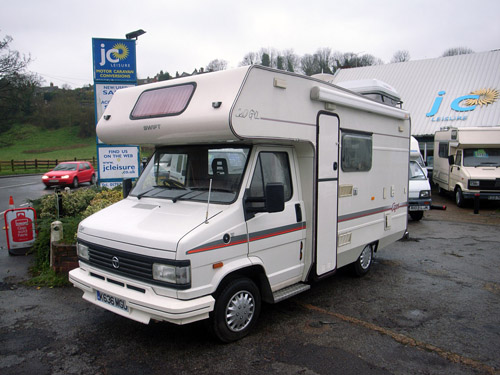
Posted in TRIP LOGISTICS | 1 Comment »
For the past four years I’ve worked almost exclusively with a Mamiya 7 camera, and is what I used for Motherland.  I’d originally planned to use a 5×4 field camera for the trip but because of logistical reasons I decided on the Mamiya. (Traveling for a year across Russia meant that I needed a light, versatile camera that could cope with very cold temperatures).Â
We English will all be shot on a 5×4 camera. I’m going to be using the beautiful Ebony 45S (see photograph below), a lovingly crafted camera made from ebony wood and titanium. It is lightweight, compact and easy to use. However, what I’m most enamoured by is its simplicity and purity. It is the antithesis of our modern digital age and is a far more contemplative process to image making, too rarely seen in our twenty-four-hour news media world. Importantly for me, I also take better photographs with it!
There is something much more personal about my relationship with the camera, partly due to the amount of time and effort it takes to compose an image, where I find myself being more considered in framing every scene. This relationship also extends to my subjects who I find relate to me as a photographer in a more intimate way and, on the whole, tend to take the image making process more seriously than if I was snapping away with a smaller, hand held camera.
In a bizarre way, I also tend to get more spontaneous photographs, especially in situations where there a lots of people in the frame, mainly because by the time I’ve set-up and am ready to take the photograph, people have got bored looking at the camera and continue with what they were doing.
I’m going to be photographing exclusively with a Schneider 150mm lens using Fuji Pro160 S film.
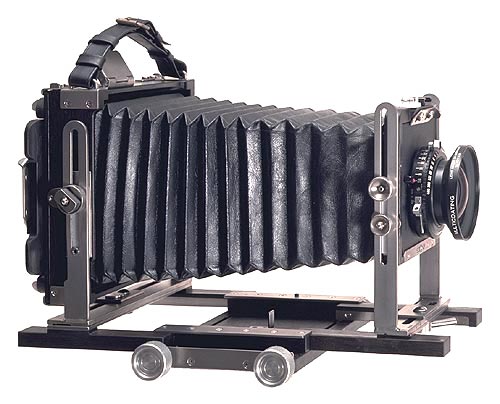 Â
Â
Posted in TRIP LOGISTICS | 5 Comments »
Welcome to my We English blog, more details to follow shortly, but I just thought I’d post an image from the freak snow storm that hit England yesterday. Here I am photographing on Tandridge Golf Course, ably assisted by my daughter Jemima. © Sarah Roberts  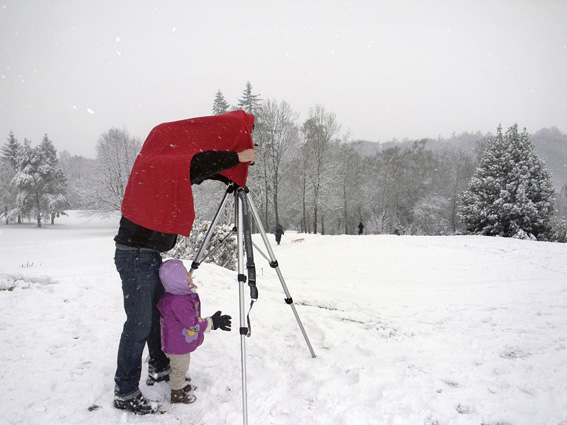
Posted in ON THE JOB | Comments Off on FIRST POST
Having done a few initial test shoots with the Mamiya 7 camera, samples of which you can see below from my scrap book, I’ve decided to go up to a larger format and exclusively use a 5×4 camera for We English. I’ll discuss reasons why in a post to follow.
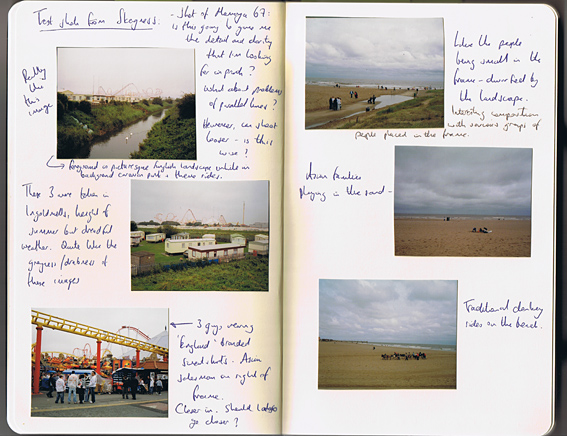
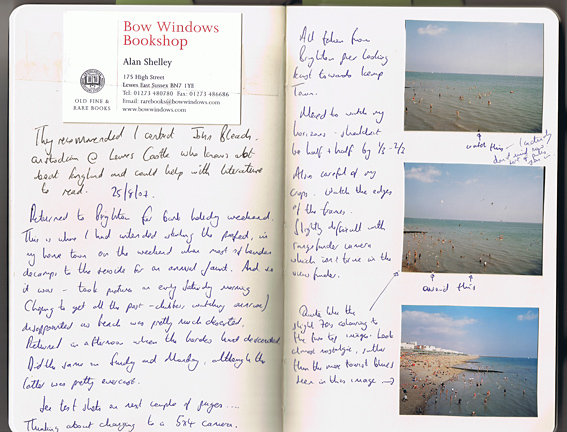
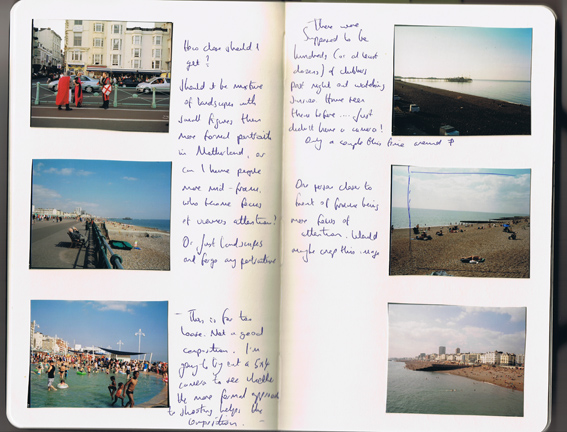
Posted in RESEARCH | Comments Off on PAGES FROM MY SCRAP BOOK
We English aims to be a rich, extensive and nuanced corpus of images that help create a new dialogue in the photographic analysis of contemporary English society and the challenging notion of Englishness, and which extends a rich history of British photographers documenting their homeland.
After spending two years producing a book about Russia and Russian identity (Motherland published by Chris Boot Ltd), I began in turn to think about my own homeland and about the concept of Englishness and all its complexities.
We English will be a sustained photographic documentation of England in 2008. My aim is to create a photographic journal of life, specifically documenting landscapes where groups of people congregate for a common purpose and shared experience. It will be about what people do in their spare time, their leisure pursuits and pastimes and how people derive meaning and identity from these activities. It will also be about people’s relationship with their environment, whether their immediate surroundings are urban or rural. Recreation will provide the basis for a wider exploration of people’s attachment to place and the way in which the inhabitants of England derive meaning and identity from everyday events and activities. The project will focus on events that take place on a local level and at locations where everyday rituals are played out. (While traditional communities have weakened, our attachment to locality remains strong and provides an important expression of identity.) [1]
Logistically, We English will take the form of a series of journeys around England in a motorhome (the main journey being from April until September when I will be joined by my wife and daughter). The journeys will be based on my own research together with ideas sourced via this website where I’m encouraging you, the general public to post details about events and share information about your ideas on the notion of Englishness and how it relates to you. This collaboration will be important in dealing with the complex issues surrounding notions of cultural representation and will also enable me to access a broader spectrum of themes and geographical locations. Moreover, We English will be a pilgrimage of sorts, where I will seek out those places that I believe have helped shaped my own feelings of Englishness.
The project will extend, and reflect upon, a history of documentary photographic projects and the variety of approaches that British photographers have utilised to capture the lives of diverse communities across the country and explore issues surrounding national identity and the constantly shifting notion of Englishness. [2] The long and rich tradition of British photographers documenting their homeland, some of which could be seen in the recent exhibition at Tate Britain ‘How We Are – Photographing Britain,’ has seen work produced by the likes of Humphrey Spender, Bill Brandt, Tony Ray Jones, Ingrid Pollard, Martin Parr, John Davies and Jem Southam to name a few. However, the past decade has seen relatively little work produced by British photographers. [3]
We English will draw on aspects of human geography and on cultural geography, particularly. [4] Since landscape has long been used as a commodity, an aesthetic amenity that is there to be consumed, it makes sense to use leisure activities, no matter how banal they might appear, as a way into an exploration of England’s shifting cultural and aesthetic identity. Whilst I hope to produce images that are nuanced and beautiful, even elegiac, they will nonetheless explore that ways in which landscape can also become a place of conflict, a place where received ideas about nationhood and quintessential Englishness are challenged.
I am interested in the reality of an England at this time of rapid social and cultural flux but am not seeking to overturn stereotyped images of traditional English scenes. (This has already been admirably achieved by John Kippin, Ingrid Pollard and others.)Â We English will yield contemporary visions of my country that recognise the narrowness of long-held mental images of England and explore the ambiguities and complexities of our place within the world around us in a manner that amplifies and extends meaning.
Footnotes-
[1] Recent research by the Economic & Social Research Council shows that the community that really matters to people is very geographically local. Source: ESRC- ‘Britain in 2008’. Statistics show that two-thirds of people live within five miles of where they were born; local radio attracts 25 million listeners a week in contrast to an average of 13 million to Radio 2; and while 60-70% of us read a national newspaper daily, 80-84% will read a local newspaper. Source: Julian Baggini, ‘Welcome to Everytown’.
[2] I’m interested in the concept of Englishness, as opposed to Britishness, which has become increasingly complex since devolution. A recent study by the ESRC also found that many English respondents wanted to ‘shrink’ their British identity to a more localized English one like those of the Scots, Welsh and Irish. Furthermore, geographically England dominates the UK, accounting for nearly 85% of its population.
[3]Â Examples of more recent studies would be the work of The Caravan Gallery by Jan Williams & Chris Teasdale and The Folk Archive by Jeremy Deller & Alan Kane.
[4] The work will explore the connection between the imaginative geography of landscape and the ‘imagined community’ (Benedict Anderson, 1983), where Anderson argues that England as a nation is not directly experienced by its inhabitants in the same, unifying manner but rather that the concept is tied together by a range of images held in the minds of its fellow-members.
Posted in RESEARCH | Comments Off on ABOUT WE ENGLISH










 Â
 


